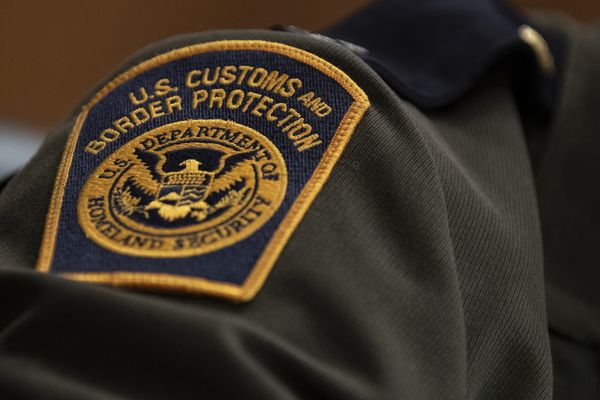Three days into the marine turtle nesting season, “toxic” polystyrene beads started washing up along the Sunshine Coast near Maroochydore, spread over at least 5km of the beach and riverbank.
Volunteer groups involved in the ongoing beach cleanup say the spill is a “significant pollution event” in a Unesco biosphere reserve area.
But more than a week since the polystyrene was first discovered on 3 November, two Queensland government agencies are still arguing about the source of the pollution, and who should take charge of the response.
Under state contingency plans, Maritime Safety Queensland is the designated “control agency” for environmental pollution caused by shipping activities; when pollution comes from land sources, responsibility falls to the Department of Environment and Science (DES), or local councils.
MSQ says there is “no evidence” to suggest the polystyrene came from a ship, and shifted responsibility to other agencies.
The environment department, in a subsequent statement, said it had “determined there is no possibility the spill resulted from a land-based source”.

Heidi Tait, the CEO of Tangaroa Blue Foundation, said locals who had spent the last 10 days on their hands and knees in the sand picking up tiny plastic foam balls were “frustrated” at the lack of support.
“If this was an oil spill, there would be a protocol, roles and responsibilities that are clear. This is just as toxic for the environment, but there are no protocols,” Tait said.
‘So toxic’
Alison Foley, a Sunshine Coast local who runs the environmental group Ten Little Pieces, has been heavily involved in the cleanup, including organising volunteers and identifying sites where polystyrene was found.
“There’s very clear academic and scientific evidence that polystyrene is a serious threat to the environment, the economy and human health,” Foley said.
“It’s so toxic to animals and humans, translocatable, durable, fragile and easily ingestible. We have an obligation to address it, contain it and mitigate its impact on these extremely fragile ecosystems in the most efficient and effective manner.”
Volunteers filled more than four wheelie bins with polystyrene balls hand-plucked or vacuumed from the beach; a council beach grooming tractor removed another 15 cubic metres from the beach – including polystyrene, debris and sand – in the first three days.

The beads have been located on the coast from the Alexandra Headland wall to Chambers Island in the Maroochy River, a stretch of about 5km of coastline.
Lester Landsey, from the industry body Expanded Polystyrene Australia, said the size and scale of the beads “suggests an industrial source, likely from imported bean bag bead”. Landsey attended the beach last week and donated cleanup kits to volunteers.
Dispute over responsibility for cleanup
In a letter to authorities sent on Saturday, Tait said the lack of a response framework meant that “the bulk of the clean-up efforts fell upon dedicated volunteers and concerned citizens”.
This mirrors the situation after the “White Spill” event last year, caused by widespread flooding in south-east Queensland. More than 300 pontoons washed out of the Brisbane River, more than a dozen washed up on Sunshine Coast beaches where chunks of polystyrene polluted the coastline.
Tait said a working group, supported with funding by DES, had recently completed a review into the White Spill. Its recommendations included the need for clear protocols about who takes responsibility when similar pollution events occur.
MSQ said in a statement that it had “investigated the potential” that the polystyrene had come from a ship, in consultation with Australian Maritime Safety Authority, but had found no evidence of this.
“General debris is the responsibility of DES and/or local councils. As such, Sunshine Coast council has been leading the shoreline clean-up,” MSQ said.
DES said in a statement it had been liaising with the council regarding the cleanup and would “continue to provide support and advice where needed”.
DES did not address specific questions, including who was the lead agency for the response, other than to say there was “no possibility” the spill came from land.
The council was contacted for comment but had not responded by deadline. It had been calling for volunteers to help with the cleanup.







